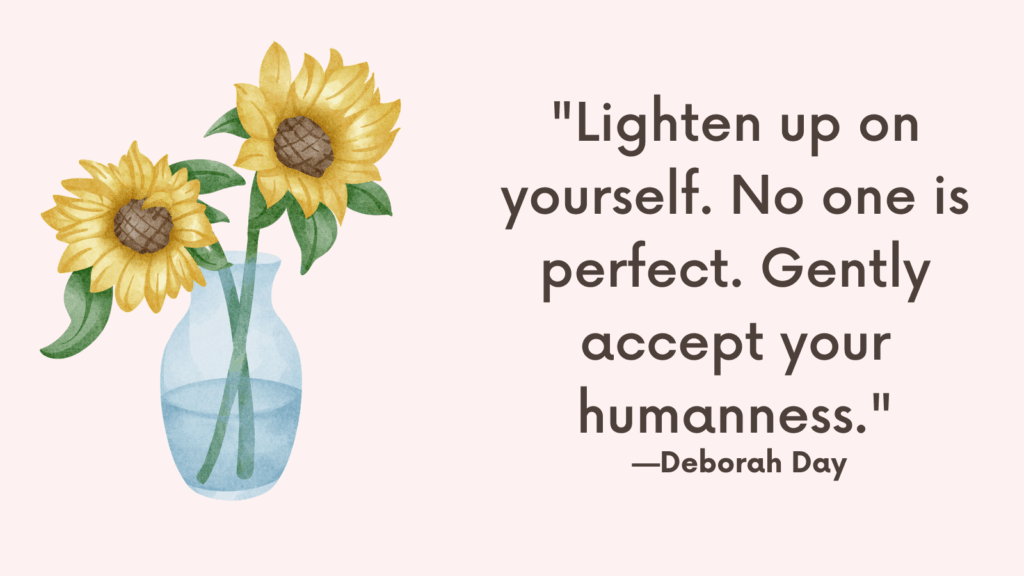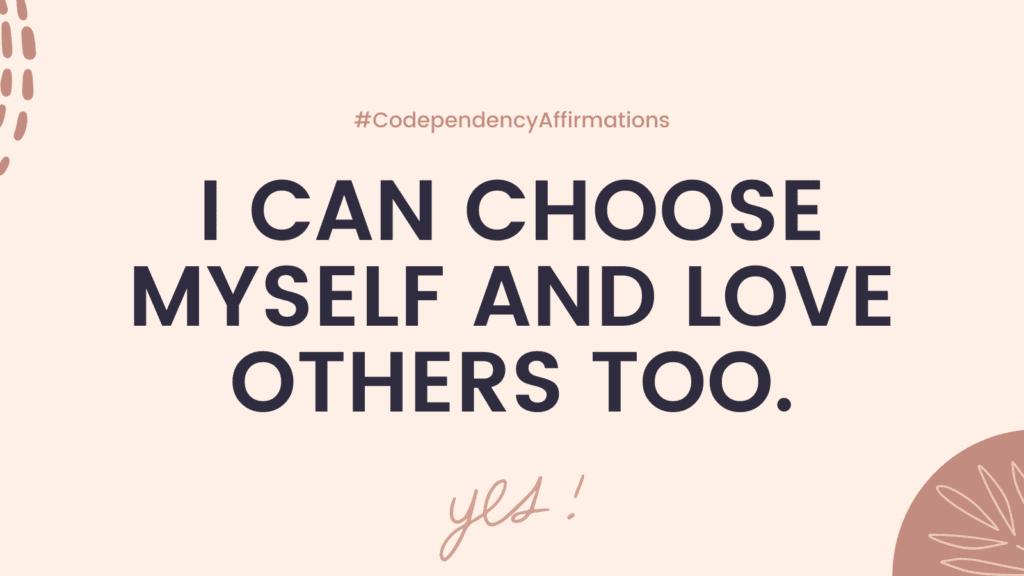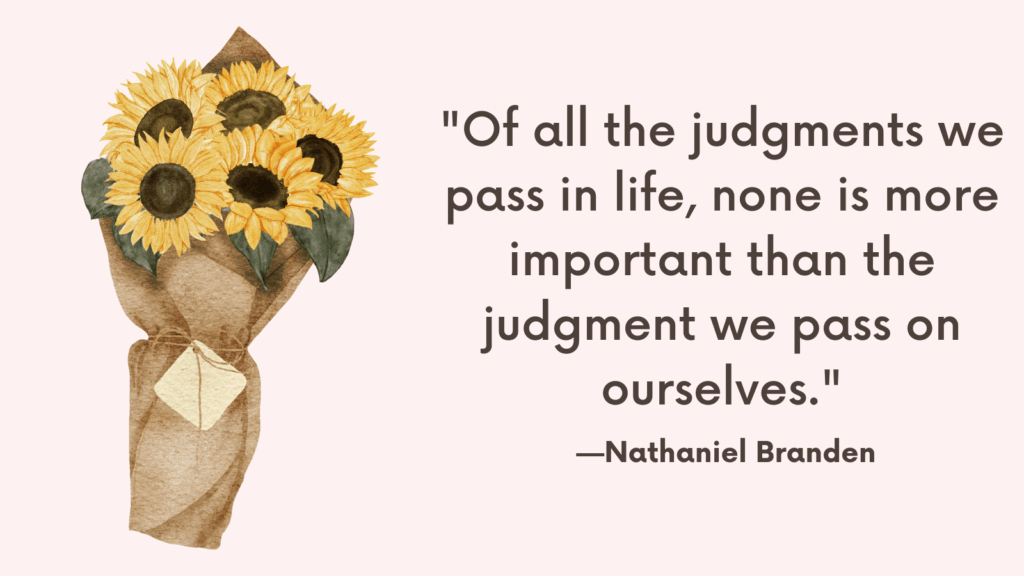This post contains codependency checklist to help you identify codependent tendencies.
Codependency Checklist
Recognizing codependent tendencies is the first step toward change, and with the right support, you can cultivate healthier and more fulfilling connections with yourself and others.
1. Difficulty setting boundaries and saying no.
2. Relying on others for a sense of self-worth and validation.
3. Fear of abandonment and an overwhelming need for approval from others.
4. Neglecting your own needs and consistently prioritizing others.
5. People-pleasing behavior and excessive caretaking.
6. Difficulty expressing emotions and an excessive focus on others’ feelings.
7. Enabling harmful behaviors in others to maintain relationships.
8. Lack of assertiveness and trouble asserting your own needs and desires.
9. Feeling responsible for others’ emotions and well-being.
10. Low self-esteem and self-worth.
11. Overworking or overcommitting to avoid facing unresolved emotional issues.
Related: Best 10 Overcoming Codependency Exercises
12. Tolerating mistreatment or abusive relationships due to fear of being alone.
13. Feeling guilty when prioritizing personal needs or taking care of yourself.
14. Difficulty identifying and communicating your own wants and needs.
15. Feeling responsible for solving other people’s problems.
16. Difficulty accepting compliments or feeling unworthy of praise.
17. Feeling anxious or fearful when others are unhappy or upset.
18. Experiencing heightened levels of anxiety when not in a relationship.
19. Feeling a compulsion to control or fix the lives of others.
Related: How To Break Codependency Habits For Good? (+FREE Codependency Worksheets)
20. Ignoring or denying your own emotions to avoid conflict or rejection.
21. Experiencing a lack of fulfillment despite constantly doing things for others.
22. Codependent relationships becoming the primary focus of your life.
23. Sacrificing your own values and beliefs to please others.
24. Difficulty with self-compassion and self-care.
25. Difficulty identifying and expressing your own emotions.
26. Neglecting hobbies and personal interests to cater to others’ needs.
27. Feeling resentful or victimized by the actions or choices of others.
28. A pattern of attracting and being attracted to individuals who exhibit addictive or problematic behaviors.
29. Lack of fulfillment or satisfaction in relationships, even when they seem functional on the surface.
30. Difficulty accepting help or support from others.
31. Continuing to invest time and energy into one-sided or toxic relationships.
It is important to note that codependency exists on a spectrum, and no checklist can capture the complexity of an individual’s experiences.
Related: Top 10 Signs You’re Healing from Codependency
FREE Codependency Worksheets PDF
How to Heal from Codependency?
Healing from codependency requires a combination of self-reflection, self-care, and professional support.
While the journey may be challenging, there are effective strategies that can help you break free from codependent patterns and develop healthier relationships.
Here are some key steps to consider:
1. Raise Awareness
The first step in healing from codependency is acknowledging and accepting that it exists in your life.
Educate yourself about codependency, its causes, and its effects.
Understanding how your behaviors and thought patterns contribute to codependency will empower you to make positive changes.
2. Practice Self-Care
Prioritize your own well-being and make self-care a regular part of your routine.
This includes activities that nourish your physical, emotional, and mental health.
Engage in exercise, hobbies, relaxation techniques (such as meditation or deep breathing exercises), and spending time with supportive friends and family.
3. Set Boundaries
Establishing healthy boundaries is crucial for breaking free from codependency.
Learn to recognize and communicate your needs, desires, and limits clearly and respectfully.
It’s important to recognize that setting boundaries is not selfish; it’s a way to protect your own well-being and cultivate healthier relationships.
Related: Top 25 Tips On How To Set Boundaries Without Being Controlling? (+FREE Worksheets PDF)
4. Cultivate Self-Awareness
Develop a deeper understanding of your thoughts, emotions, and triggers.
Journaling, mindfulness practices, and self-reflection exercises can help you become more aware of your patterns and gain insight into why you engage in codependent behaviors.
This self-awareness will empower you to make conscious choices and respond differently in relationships.
5. Build a Support Network
Surround yourself with people who support your journey toward healing and recovery.
Seek out individuals who understand and validate your experiences.
Join support groups or online communities focused on codependency to connect with others who are going through similar challenges.
6. Challenge Your Beliefs
Examining and questioning your core beliefs is essential for transforming codependent thinking.
Challenge beliefs such as “I am responsible for others’ happiness” or “I need to fix everything.”
Replace them with healthier and more realistic beliefs, such as “I am responsible for my own happiness” and “Supporting others doesn’t mean sacrificing my own well-being.”
Related: Negative Core Beliefs List (& 8 Tips On How To Challenge Them)
7. Learn Healthy Communication Skills
Codependency often involves poor communication patterns.
Practice assertiveness and active listening.
Learning to express your needs and emotions effectively while also empathetically listening to others can foster healthier and more balanced relationships.
8. Develop Independence
Focus on your personal growth and development outside of relationships.
Rediscover and nurture your own interests, passions, and goals.
Being independent and having a strong sense of self will make you less reliant on others for validation and fulfillment.
9. Embrace Mistakes and Celebrate Progress
Healing from codependency is a process, and setbacks may occur along the way.
Embrace mistakes as opportunities for growth and learning.
Celebrate your progress, no matter how small, and acknowledge the positive changes you make.
Related: What Causes Codependency? Top 6 Reasons You May Be Codependent
Conclusion
Remember, healing from codependency takes time and effort. Be patient with yourself and trust the process.
With commitment, self-compassion, and professional support, you can break free from codependent patterns and develop healthier and more fulfilling relationships.



